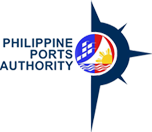OCTOBER 26, 2017, MANILA—The Port of Manila leaps 4 notches higher finishing at 32nd spot in the list of the 2016 top 100 container ports worldwide.
Manila also jumps one step higher to 22 in the list of Asian ports included in the top 100 container ports.
According to the list released by the Lloyd’s List, Manila was able to post very positive performance in 2016 due to the Philippines’ booming national economy that increased 6.8% from 5.9% a year earlier.
It also added that the higher volume handled at the Manila Port’s international terminals, composed of the Manila International Container Terminal (MICT) and the Manila South Harbor, was due to the Terminal Appointment Booking System put into place sometime in 2015. This enables smooth flow of containers resulting in a 13.8% hike in container volume to 4.523 million twenty-foot equivalent units (TEUs) from 3.976 million TEUs a year earlier. From the total volume, 2.2 million TEUs were handled by MICT or an increase of 10.8% while 1 million TEUs were handled at the Manila South Harbor for a 19.3% hike. The North Port, the domestic arm of the Manila Port, handled the rest of the volume or some 1.3 million TEUs, an increase of 14.4%.
The country bested other notable international ports in terms of container volume like the ports of Felixtowe (36), Seattle/Tacoma (41), Vancouver (52), Kobe (55), Incheon (58), Nagoya (59), Melbourne (62), London (66), among others.
In Asia, Manila was able to outperform the ports of Jawaharlal Nehru in India, Tanjung Perak (Surabaya) in Indonesia, Kobe, Yokohama and Nagoya in Japan as well as Incheon in South Korea. In the 2016 edition, 53 Asian ports made the list while 47 Asian ports were included in the 2015 list.
“This is a great testament that the Philippines has had very robust economy at least in the past two years,” PPA General Manager Jay Daniel R. Santiago said.
“This development also showcased the efficiency and productivity of the country’s top international gateways to handle the demands of the global market,” Santiago added.
“With the ongoing changes being implemented to achieve excellence, the PPA is indeed on course in achieving its vision to have its ports at par with global standards by 2020,” Santiago stressed.
As of the moment, the PPA is implementing several projects in its bid to further improve the efficiency and productivity of the Philippine ports through partnerships with the private sector like in the ports of Manila or through its own initiatives.
Towards this goal, PPA is in the process of modernization and development of the ports of Davao-Sasa, Iloilo, Cagayan de Oro, General Santos and Zamboanga to handle containerized cargo. These five ports have been identified as both strategic and commercially important, with Davao-Sasa being the priority target for development although, on a more conservative and cost-efficient level than originally planned.
PPA is also pursuing its Quality Management System (QMS) compliance in all of its processes to maintain a high level of excellence in the agency. Just recently, PPA was recognized by the Government Quality Management Committee for successfully establishing a QMS Certified to ISO 9001 Standards in compliance with Executive Order No. 605 s. 2007 at the Port Management Offices in Bicol, Palawan, Davao, Misamis Oriental/Cagayan de Oro, SOCSARGEN, Misamis Occidental/Ozamis, Panay/Guimaras, Zamboanga and Batangas.
Also, in July of this year, PPA increased the volume and revenue targets for the agency for 2017 after PPA posted higher than forecasted growth in the first semester of 2017.
“For the year 2017, growth in terms of Gross Domestic Product is at 7.5%, so this should be the guide,” Santiago explained.
“The intention is to set a more optimistic revenue commitment taking into account the positive development in the economy during the first half of the year,” Santiago added.
###



